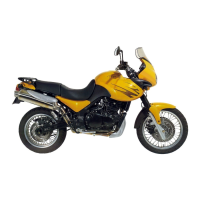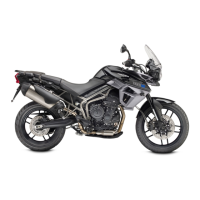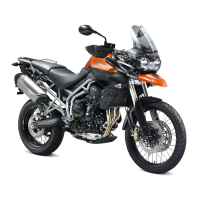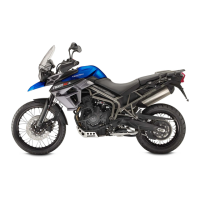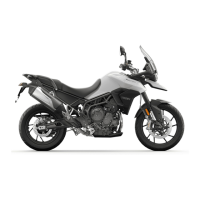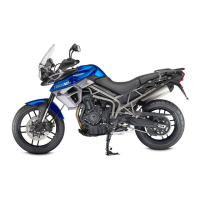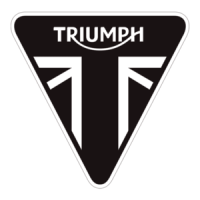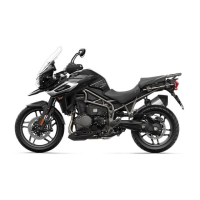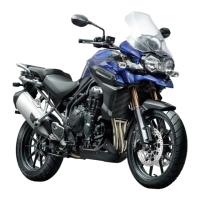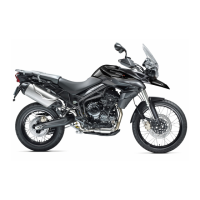General Information
61
Filling the Fuel Tank
Avoid filling the tank in rainy or dusty
conditions where airborne material can
contaminate the fuel.
Fill the fuel tank slowly to help prevent
spillage. Do not fill the tank to a level
above the bottom of the filler neck. This
will make sure there is enough air space
to allow for fuel expansion if the fuel
inside the tank expands through
absorption of heat from the engine or
from direct sunlight.
1. Maximum fuel level
2. Fuel filler neck
3. Air space
After refuelling always check that the
fuel filler cap is correctly closed and
locked.
After refuelling, the fuel gauge and
range to empty information is only
updated while riding the motorcycle.
Depending on the riding style, this could
take approximately five minutes.
Overfilling the tank can lead to fuel
spillage.
If fuel is spilled, thoroughly clean up
the spillage immediately and dispose
of the materials used safely.
Take care not to spill any fuel on the
engine, exhaust pipes, tyres or any
other part of the motorcycle.
Because fuel is highly flammable, any
fuel leak or spillage, or any failure to
observe the safety advice given above
may lead to a fire hazard, which could
cause damage to property and injury
or death to persons.
Fuel spilled near to, or onto the tyres
will reduce the tyre's ability to grip the
road. This will result in a dangerous
riding condition potentially causing
loss of motorcycle control and an
accident.
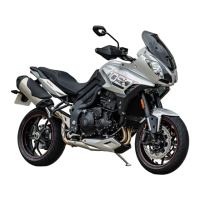
